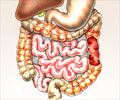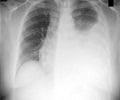US scientists have found the structure of a 'metabolic switch' of the TB bacterium and prevent tuberculosis and other pathogenic bacterial diseases soon. A group of American scientists have reached very close to finding out what controls the switching on and off of genes that carry out all of life's functions by studying the structure of a metabolic switch found inside the bacterium that is responsible for tuberculosis -TB.
The research team-consisting of experts from the Commerce Department's National Institute of Standards and Technology NIST, and the Department of Energy's Brookhaven National Laboratory BNL-have revealed that their study was focused on Mycobacterium tuberculosis.Posting a study paper online in the Journal of Biological Chemistry, the researchers say that they have for the first time defined the structure of a metabolic switch found inside most types of bacteria-the cyclic AMP cAMP receptor protein, or CRP-in its off state.
They hope that once the switching mechanism is understood the data can be used to develop new methods for preventing tuberculosis and other pathogenic bacterial diseases.
We know that many pathogenic bacteria use cAMP as a signal for activating genes that keep the microbes thriving in adverse conditions, and therefore, remaining virulent. Blocking these processes might provide ways to shut down infections and save lives, says NIST biochemist and lead author Travis Gallagher.
He and his colleagues have developed a computer model of the defined structure for the cyclic AMP receptor protein CRP found in Mycobacterium tuberculosis.
The researchers say that the off state of the CRP, which is unable to activate genes necessary for the microbe's survival, is represented by two subunits of the protein that are genetically identical, but appear to be asymmetric.
Advertisement
Although the M. tuberculosis protein in the 'off' state consists of two subunits that are genetically identical, we were surprised to see that the subunits were not structurally symmetrical as well. In most two-subunit proteins, each subunit has the same conformation as the other, Gallagher says.
Advertisement
They believe that learning how this specific protein switch works may provide insight into how genes in general are regulated.
Our next step is to crystallize M. tuberculosis CRP in the active state and define its structure. When that is accomplished, we'll be able to see the identical protein from the same organism in both states, which may give us the means to explain how CRP switches from its asymmetric form inactive state to its symmetrical active state form, Gallagher says.
Source-ANI
SPH














